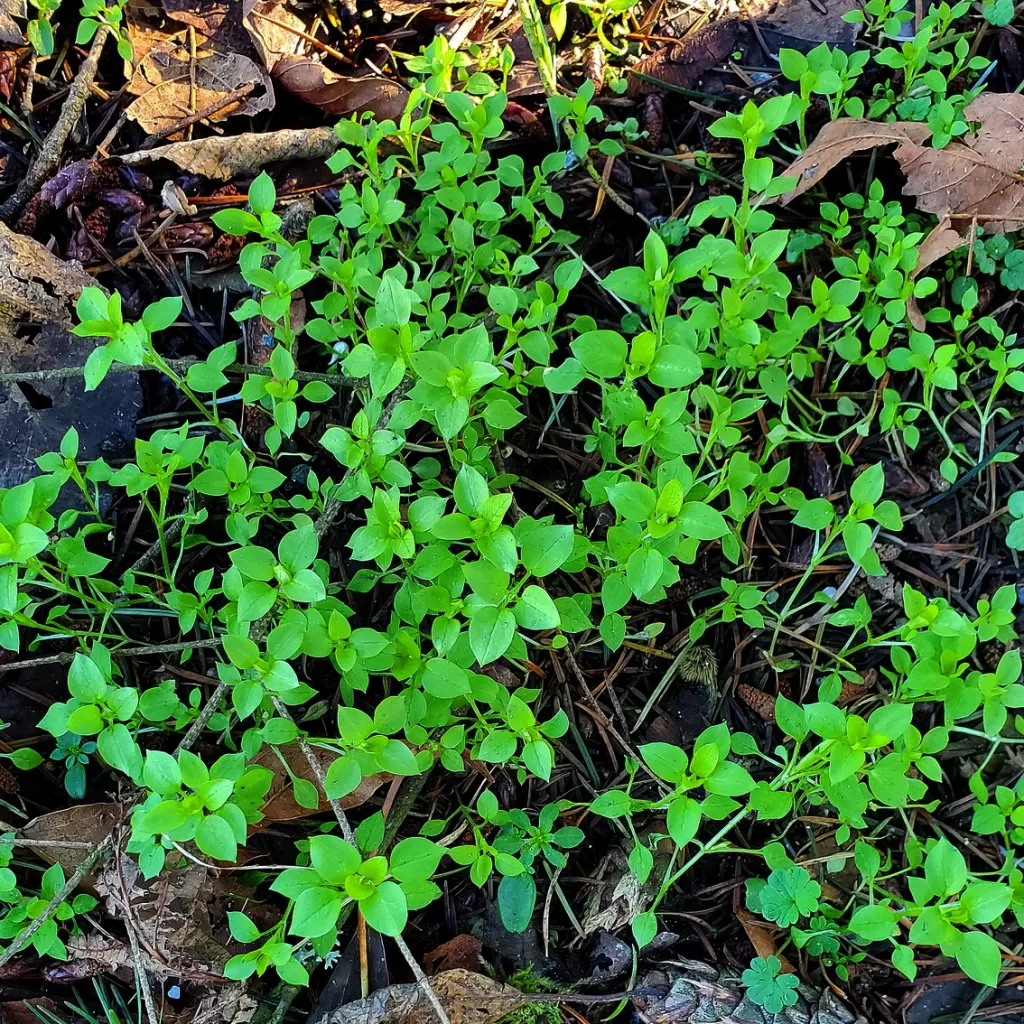Annual Winter Weeds
Among the annuals that germinate in winter, several are Eurasian introductions that deserve our attention once we have eliminated the more-invasive weeds from our backyard forests. I’ve already written about Nipplewort and Wall Lettuce (here, here, and here), but there are others which can sometimes become a nuisance if left unchecked.
None of these small forbs represent a real threat to the health of forests, but they can outcompete natives, especially in disturbed edges. And from an ecosystem perspective, any non-native plants can theoretically reduce biodiversity by failing to support the myriad of invertebrates at the bottom of the food chain. In this blog I write about three that I’ve been pulling the last few weeks as I work to maintain Bradley lines around forest edges.
Shotweed
I recommend Sarah Gage’s entertaining WNPS blog, “Shoot! It’s Shotweed.” Among other things, she reviews the consensus among experts that in the Puget Sound Region we are far more likely to find the introduced Shotweed (Cardamine hirsuta), than the native bittercress of western North American (Cardamine oligosperma). Because of this, I am comfortable removing bittercress plants when they are still at the basal rosette stage. Furthermore, telling the two species apart would require waiting until they are flowering, by which time some would likely be producing seeds and already proliferating the next generation.

In one area of Salmonberry shrubs where I was working recently, the Shotweed plants were so thick that I ended up simply encircling the entire patch with a Bradley line to keep them from spreading further. When I get back to this area later, after they are flowering, I’ll bring some of the plants home where I can look at the tiny flowers under a lens to count stamens. In the very unlikely event they turn out to be C. oligosperma, I’ll gladly leave them alone.
Cleavers
Though I claim to have made my peace with Cleavers (Gallium aparine), I can’t resist removing some of the just-emerging sprouts as I weed along the edges. Pojar and MacKinnon claim it’s native, but Jacobson thinks it’s almost certainly European. Like the other minor weeds in this blog, it poses no threat to trees, but I don’t like the way it looks by midsummer, overtopping the other plants. I do avoid pulling the far-less-aggressive Sweet-Scented Bedstraw (Gallium triflorum) when I find it growing in the forest. According to Wikipedia, G. triflorum is considered noxious in some New England states, but looking at the maps on which that assertion is based it may be because it’s been lumped with G. aparine.
Chickweed
The low-growing Eurasian Chickweed (Stellaria media) stays small and dies back very early in the growing season. Jacobson, labels it “common as dirt” and touts it as an excellent green manure, which, according to Dale Strickler, is essential to restoring soil. Perhaps this is a non-native plant worth leaving alone.
